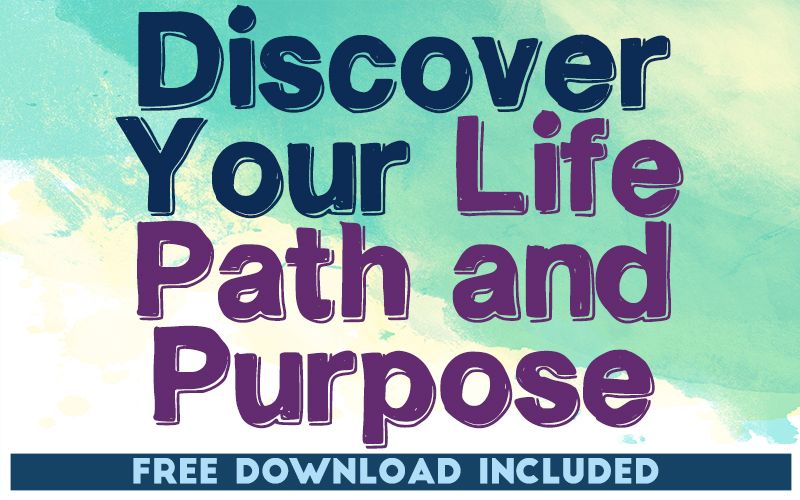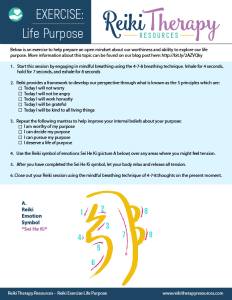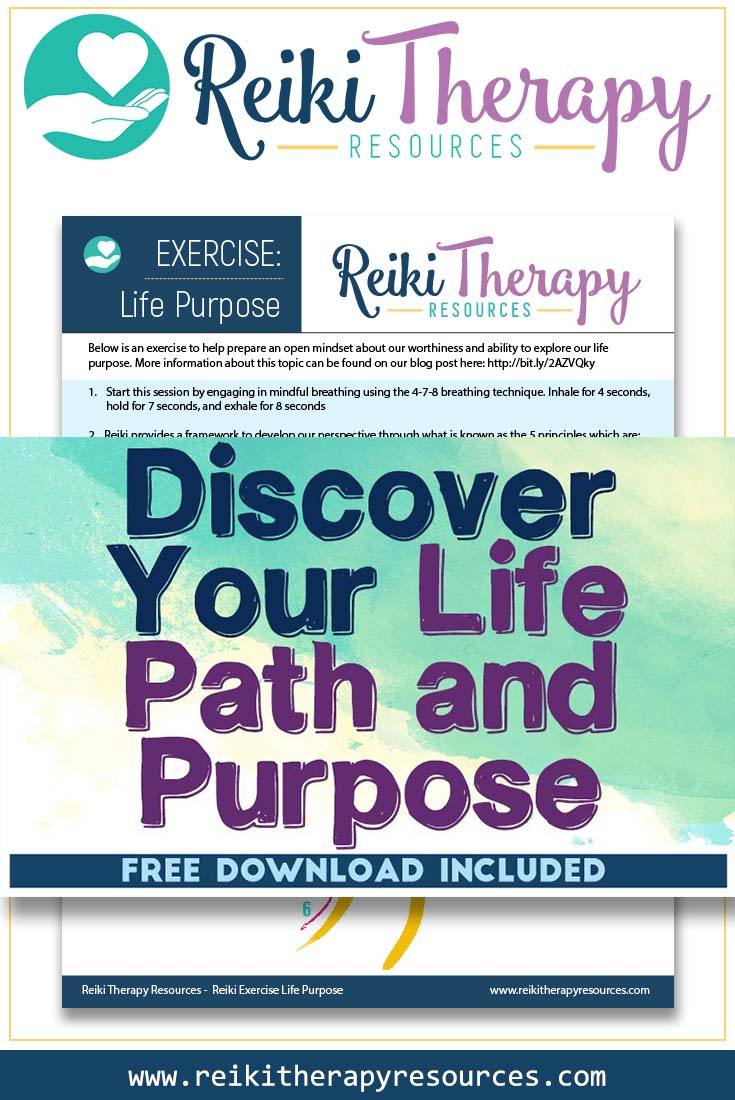
THIS POST INCLUDES:
——————————————–
1. Finding Purpose in Life
2. Define your life purpose
3. Set a path to achieve your purpose
4. Free Download Reiki Exercise
FINDING PURPOSE IN LIFE
Many of us go through life making decisions about our hobbies, careers, and family/social life based on what we have been exposed to through other people in our social circle.
When we are young we often make decisions based on the opinions and expectations of others, however, as we mature and gain more life experiences we might find ourselves looking at a broader range of views and wonder if what we’ve done so far has provided a purpose in our lives.
We might find ourselves asking some of the following questions:
- How can I bring more happiness and meaning to my life?
- How can I use my time to pursue a path that gives me purpose?
- What would I do if earning money wasn’t a consideration in my decision?
- What do I want to be remembered for?
Ironically though, sometimes these questions and the pursuit of purpose can instill as much expectation and obligation as doing the things we don’t want to do in our lives. With this in mind, seeking a bigger purpose in our lives should be something we pursue with openness and passion instead of expectation and obligation.
Finding purpose in life often requires a balance of seeking satisfaction through decisions you make to change your life. However, finding purpose isn’t a cure-all for resolving problems in your life with the belief that finding a purpose will eliminate those problems.
A life purpose can mean different things to some people. For some, it may mean all aspects of their lives are in alignment with a common goal. For others, it may mean a career that gives purpose. Alternatively, for others, seeking a purpose may refer to what they do outside of their career and other life obligations. The level at which you incorporate a purpose in your life, and its many facets, is always personal.
Generally speaking, your life purpose usually involves a common theme in your life that brings together all of your life experiences, skills, abilities, and things that hold your interest.
DEFINE YOUR LIFE PURPOSE
One of the most important tools to find your life purpose is the experiences you have had in your life. These experiences can inform us of what we love, what we hate, what inspires us and motivates us, and what gives us a deeper sense of purpose, contentment, and satisfaction.
It is useful to reflect on experiences that gave you a sense of joy and accomplishment, however, it’s also useful to identify the experiences that gave you a sense of fear, anxiety, and dread. Defining your life purpose involves knowing what motivates you as well as knowing what does not motivate you.
Reflection provides the space for you to gain important insight into what matters most to you and what drives your interests. This provides vital information as you work towards refining your life purpose.
This doesn’t mean we should avoid difficult things in life. Even pursuing things we love often requires effort and sacrifice, however, these moments often culminate in an outcome that delivers its promise of giving your life purpose.
EXERCISE
One useful exercise that may help you define your life purpose is below:
- Sit quietly and close your eyes if that helps eliminate visual distractions
- Contemplate the idea of your ‘perfect day’
- As you contemplate this idea, think about how you want to spend this day. Is this day occurring where you currently live or in another location?
You might dream of the perfect day as visiting bakeries in Paris or a week in the Maldives, however, for the purpose of this exercise, we want to focus on the everyday. What would a day be like that can form part of your everyday life.
Once you have created that perfect day in your imagination, use it to guide how you might define your life purpose.
Some aspects that might provide joy and purpose in your life:
- Working with people or alone
- Working with large groups or working with individuals
- Experiences with your family or broader communities
- Working with technology or not
- Working indoors or outdoors
- To nurture creativity
The above statements are presented as either/or decisions but often we can like two opposing ideas at once. For example, you may like working indoors as well as outdoors and can find a way that your purpose incorporates a balance of both options.
After reflecting on your past experiences, you can begin to formulate your life purpose statement. Below are some examples of life purpose statements that might help you create your own:
- To inspire children to develop self-belief and resilience
- To raise a family that thrives in nature
- To help small business owners create a multi-generational
- To engage in the world with a focus on nature, spirituality, and social equality
- To be a positive presence in people’s lives
It’s important to remember that defining a life purpose requires an openness to change – change to work towards your life purpose, and openness to change your goals as your circumstances change. For example, the life purpose you define at age 25 might look differently when you are 55 and have experienced more of life.
Remaining flexible, open, and positive will help keep you focus your attention on understanding a life purpose that means most to you.
SET A PATH TO ACHIEVE YOUR PURPOSE
Once you have identified your life purpose, the next step is to create an action plan that will help set a path for how you can achieve your purpose.
- Identify what depletes your physical and mental energy so you can be aware of potential pitfuls of pursuing your purpose
- Seek to reduce or eliminate any distractions that will detract from exploring or fulfilling your purpose
- Identify people in your life that support you or drain your energy
- Learn to say ‘no’ to obligations or requests for your time that doesn’t contribute to your purpose
- Undertake the exercise above mentioned in the DEFINE YOUR LIFE PURPOSE section of this post.
After you have identified your life purpose and the potential distractions and supports for pursuing your purpose, start to devise a plan that will help move you to the next step of action.
It is difficult to quantify a pathway in this post because each pursuit of a life purpose will require its own demands of time, energy, and other resources. Your purpose may require a change of mindset or it could require a more complex set of physical steps to take.
As with any set of actions, there are often qualifiers and nuances to how we can view aspects of our lives. Some people can throw caution to the wind and pursue their purpose without concern for tomorrow or any potential fallout. This doesn’t always imply irresponsibility as some people can boldly make decisions and believe they will be ok.
For others, certain aspects of their lives may significantly impact their ability to pursue personal goals of purpose. Each person must make their determination for what they can temporarily or permanently change in their life to pursue a path that helps develop their life purpose.
REIKI EXERCISE
The difficulty of seeking a life purpose is the messages we carry about our worthiness and ability to achieve that purpose.
This mindfulness exercise is designed to help us become open to our worthiness for change and seek a purpose that brings us fulfillment.
- Start this session by engaging in mindful breathing using the 4-7-8 breathing technique. Inhale for 4 seconds, hold for 7 seconds, and exhale for 8 seconds
- Reiki provides a framework for us to develop our perspective in life through what is known as the 5 principles which are:
- Today I will not worry
- Today I will not be angry
- Today I will work honestly
- Today I will be grateful
- Today I will be kind to all living things
- Repeat the following mantras to help improve your internal beliefs about your purpose:
- I am worthy of my purpose
- I can decide my purpose
- I can pursue my purpose
- I deserve a life of purpose
- Use the Reiki symbol of emotions Sei He Ki (pictured below) over any areas where you might feel tension.

- After you have completed the Sei He Ki symbol, let your body relax and release all tension.
- Close out your Reiki session using the mindful breathing technique of 4-7-8.
FREE DOWNLOAD
SIGN UP below to receive your FREE DOWNLOAD. Once you enter your email address, you will receive access to the Free Reiki Exercise.

BUILD YOUR REIKI REFERENCE MATERIALS:
Pin this image to your Pinterest board.

SHARE KNOWLEDGE & PASS IT ON:
If you’ve enjoyed this post, please share it on Facebook, Twitter, Pinterest. Thank you!
